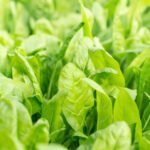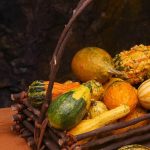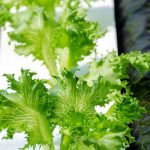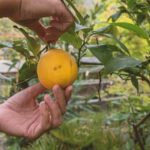Are you ready to start your own vegetable garden in Australia? In this Gardening Australia Vegetable Growing Guide, you will find all the essential information you need to create and maintain a successful garden. From choosing the right location to harvesting and storing your produce, this guide will provide you with valuable tips and insights for vegetable growing in Australia.
With its diverse climate zones and fertile soil, Australia offers the perfect conditions for growing a wide variety of vegetables. Whether you are an experienced gardener or just starting out, cultivating your own vegetables can be a rewarding and sustainable way to enjoy fresh, nutritious produce while reducing your environmental impact. By following the recommendations in this guide, you can turn your backyard into a bountiful source of homegrown goodness.
In the following sections, we will cover everything from selecting the best vegetables for your region to preparing the soil for planting and caring for your garden throughout the seasons. By understanding the importance of vegetable growing in Australia and learning how to create a thriving garden, you can enjoy the many benefits of having fresh, healthy produce right at your fingertips. So let’s get started on this exciting journey toward successful vegetable gardening in Australia.
Choosing the Right Location
When it comes to growing vegetables in Australia, choosing the right location for your garden is crucial for a successful harvest. Assessing sunlight, soil quality, and water accessibility are key factors in finding the perfect spot for your vegetable garden. Here are some tips on how to choose the right location for your vegetable garden:
- Sunlight: Most vegetables need at least 6 hours of sunlight per day. Choose a spot in your garden that receives adequate sunlight throughout the day, especially during the growing season. Consider factors such as shade from buildings or trees that may affect the amount of sunlight your garden receives.
- Soil Quality: The quality of the soil is essential for healthy plant growth. Conduct a soil test to determine its pH level and nutrient content. Most vegetables thrive in well-drained soil with a pH level between 6.0 and 7.0. If necessary, amend your soil with organic matter such as compost or aged manure to improve its fertility.
- Water Accessibility: Adequate water supply is crucial for vegetable growth. Choose a location that is near a water source, whether it’s a hose or an irrigation system. Consider the drainage patterns in your garden to avoid waterlogged areas that can harm plant roots.
By carefully assessing these factors, you can find the perfect location for your vegetable garden and set yourself up for success in growing healthy and productive crops.
It’s important to note that different regions of Australia may have different climate conditions which can affect all factors mentioned above when choosing where to place your vegetable garden. For more tailored information on what would be best suited for where you live we recommend checking out Gardening Australia Vegetable Growing Guide which provides recommendations for beginner gardeners based on specific regional climates across Australia.
Selecting the Best Vegetables for Your Region
When it comes to vegetable growing in Australia, one of the most crucial factors for success is selecting the right vegetables for your specific region. With the country’s diverse climate zones and varying growing conditions, it’s important to choose vegetables that are well-suited to thrive in your particular area. For beginner gardeners, this can be especially daunting, but with the right guidance, it can become an enjoyable and rewarding experience.
In tropical regions such as Northern Australia, where temperatures remain consistently warm throughout the year, popular vegetables that thrive include tomatoes, sweet potatoes, eggplants, and chili peppers. These heat-loving plants will do well in areas with high humidity and ample sunlight. For beginners in these regions, starting with these resilient vegetables can be a great way to build confidence and experience early success.
In contrast, in cooler southern regions such as Tasmania or Victoria, vegetables like broccoli, cabbage, carrots, and garlic are better suited for the milder temperatures and distinct seasons. These colder weather crops can withstand frost and provide a bountiful harvest when planted at the appropriate times.
Beginner gardeners in these areas may find joy in watching these hardy vegetables flourish despite the cooler climate. By choosing vegetables that align with your specific climate zone and following recommendations for beginner gardeners, you’ll be well on your way to a successful vegetable garden in Australia.
Preparing the Soil
Composting is a natural process that involves decomposing organic matter such as kitchen scraps, yard waste, and plant materials to create nutrient-rich humus. This humus can then be added to the soil to improve its structure, water retention, and nutrient content.
To start composting, you can use a compost bin or simply create a compost pile in your garden. It’s important to maintain the right balance of green and brown materials, keep the pile moist but not waterlogged, and turn it regularly to aerate and speed up decomposition.
In addition to composting, there are other techniques for improving soil fertility such as adding organic matter like aged manure or cover crops like legumes that fix nitrogen into the soil. It’s also crucial to perform a soil test before planting to assess its pH level and nutrient content. Based on the results, you may need to add amendments like lime or fertilizer to ensure optimal conditions for your vegetables.
| Soil Preparation Techniques | Benefits |
|---|---|
| Composting | Enriches soil with nutrients; improves structure; reduces waste |
| Adding Organic Matter | Enhances fertility; improves water retention |
| Performing Soil Test | Assesses pH level and nutrient content; guides amendments needed |
Planting and Care Instructions
Choosing the Right Time to Plant
When it comes to planting your vegetable garden in Australia, timing is crucial. Different vegetables have different optimal planting times, so it’s important to do some research or consult a local gardening Australia vegetable growing guide for specific recommendations for your region. Generally, cool-season crops like lettuce and spinach are best planted in early spring, while warm-season crops like tomatoes and peppers should be planted after the last frost date in late spring.
Proper Watering Techniques
Watering is another essential aspect of caring for your vegetable garden. It’s important to water consistently, ensuring that the soil remains moist but not waterlogged. Aim to water the base of the plants rather than spraying them from above, as this can help prevent diseases such as mildew and blight. Additionally, using mulch around your plants can help retain soil moisture and reduce the frequency of watering.
Natural Pest Control Methods
One of the biggest challenges in vegetable gardening is dealing with pests and diseases. To avoid using harmful chemicals, consider implementing natural pest control methods such as introducing beneficial insects like ladybugs or creating barriers with row covers to protect your plants from pests. Another effective technique is companion planting, where certain plants are grown together to deter pests naturally.
Disease Prevention
To prevent common plant diseases such as powdery mildew or blight, it’s important to practice good garden hygiene by removing any diseased plant material promptly and maintaining proper spacing between plants for adequate air circulation. Using disease-resistant varieties of vegetables can also help minimize the risk of infection. Keeping an eye on your plants and addressing any issues promptly can make a significant difference in preventing major pest infestations or disease outbreaks.
By following these detailed planting and care instructions, along with implementing preventive measures against pests and diseases, you can increase your chances of having a successful vegetable garden in Australia. Always remember that every region has its unique climate and conditions, so it’s beneficial to refer to a gardening Australia vegetable growing guide for specific advice tailored to your area.
Harvesting and Storing
Knowing When to Harvest
The key to delicious and nutritious vegetables lies in knowing exactly when to harvest them. Different vegetables have different signs of readiness for harvest, such as color, size, and texture. For example, tomatoes should be harvested when they are fully colored but still firm, while lettuce should be picked just before it starts to bolt. It’s important to research the specific indicators for each type of vegetable you are growing in order to ensure optimal flavor and nutrition.
Proper Storage Techniques
After harvesting your vegetables, proper storage is essential to maintain their freshness and flavor. Storing vegetables at the correct temperature and humidity levels can significantly extend their shelf life. Some vegetables do best when stored in a cool, dark place with good air circulation, while others may require refrigeration or freezing. Understanding the specific storage needs of each type of vegetable will help maximize their longevity.
Tips for Maintaining Freshness
In addition to proper storage techniques, there are several tips that can help maintain the freshness and flavor of your harvested vegetables. For example, storing root vegetables such as carrots and potatoes with their tops removed can prevent them from becoming limp or moldy.
Similarly, wrapping leafy greens in paper towels before refrigerating can help absorb excess moisture and keep them crisp. By following these simple tips and paying attention to the specific needs of each type of vegetable, you can enjoy the bountiful harvest from your garden for weeks or even months after it’s been picked.
By knowing when to harvest your vegetables and how to store them properly, you can maximize the enjoyment and nutritional benefits of your home-grown produce. With these tips in mind, you’ll be able to savor the taste of freshly harvested vegetables long after they’ve been picked from your garden.
Seasonal Maintenance
When it comes to maintaining a successful vegetable garden in Australia, it is crucial to follow a seasonal maintenance schedule that aligns with the specific needs of each region. The Australian climate varies greatly from region to region, so understanding the seasonal changes and their impact on vegetable growth is essential for a flourishing garden. Whether you are located in the tropical north or the temperate south, there are key tasks to keep in mind throughout the year.
In the tropical regions of Northern Australia, the wet and dry seasons play a significant role in vegetable gardening. During the wet season, it is important to monitor water levels carefully and protect plants from excessive rainfall.
Conversely, the dry season requires more frequent watering and measures to prevent dehydration in vegetables. In contrast, the temperate climate of Southern Australia experiences distinct seasons, making it vital to plant according to specific temperature ranges and prepare for potential frost during winter months.
Furthermore, Central Australia faces unique challenges due to its arid climate and extreme temperatures. Gardeners in this region must be prepared for intense heat and limited water availability by selecting drought-resistant vegetables and using efficient water-saving techniques such as drip irrigation. By adapting your maintenance schedule based on these regional considerations, you can cultivate a thriving vegetable garden that thrives despite diverse Australian climates.
| Region | Key Maintenance Tasks |
|---|---|
| Tropical North | Monitor water levels during wet season; implement protective measures during dry season |
| Temperate South | Plant according to temperature ranges; prepare for potential frost during winter months |
| Central Australia | Select drought-resistant vegetables; utilize efficient water-saving techniques such as drip irrigation |
Resources and Additional Tips
In conclusion, growing your own vegetables in Australia can be a rewarding and fulfilling experience. Not only does it provide you with fresh and nutritious produce, but it also allows you to connect with nature and reduce your carbon footprint. By following the tips and guidelines in this Gardening Australia Vegetable Growing Guide, you will be well on your way to establishing a successful garden that will provide you with an abundance of delicious vegetables.
For those embarking on their vegetable growing journey, it is essential to choose the right location for your garden. Assessing sunlight, soil quality, and water accessibility are crucial factors to consider when selecting the perfect spot. Additionally, selecting the best vegetables for your region is key to a successful harvest. Whether you are a beginner gardener or have some experience under your belt, this guide provides recommendations for various climate zones in Australia.
As you prepare the soil for planting and care for your vegetable garden, remember to refer back to this guide’s detailed instructions. From soil preparation to pest prevention and harvesting techniques, each step is vital in ensuring a bountiful crop of fresh vegetables.
Lastly, make use of the seasonal maintenance schedule provided in this guide to keep track of important tasks throughout the year. With these resources and additional tips for successful vegetable growing in Australia at your disposal, you are well-equipped to embark on a fulfilling gardening journey filled with fresh produce and sustainable living.
Frequently Asked Questions
What Is the Best Layout for a Vegetable Garden in Australia?
The best layout for a vegetable garden in Australia depends on the specific climate and location. However, generally speaking, raised beds are popular due to their ability to improve drainage and soil quality.
What Is the Easiest Vegetable to Grow in Australia?
The easiest vegetable to grow in Australia would likely be cherry tomatoes. They thrive in warm weather and can be grown in pots or garden beds. Plus, they don’t require much space.
What Are the Best Conditions for Growing Vegetables in Australia?
The best conditions for growing vegetables in Australia include well-draining soil, plenty of sunlight, and regular watering. It’s also important to consider the specific needs of each type of vegetable, as some may require extra care or protection from extreme temperatures.

If you’re looking to get into vegetable gardening, or are just looking for some tips on how to make your current garden better, then you’ve come to the right place! My name is Ethel and I have been gardening for years. In this blog, I’m going to share with you some of my best tips on how to create a successful vegetable garden.





